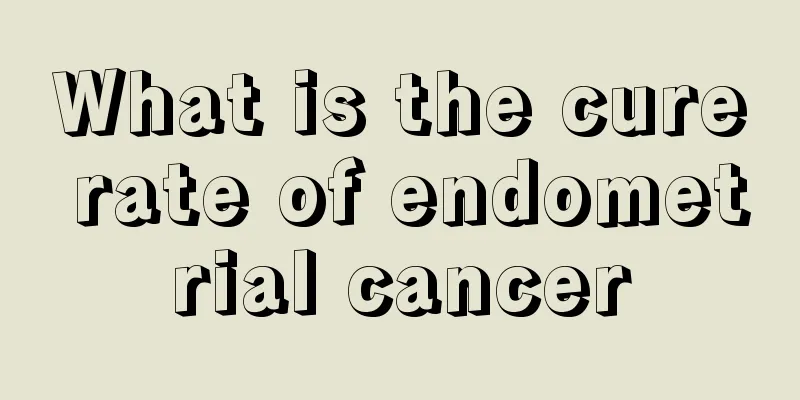Who is prone to liver cancer? How to prevent liver cancer?

|
Liver cancer is a malignant tumor of the liver, which can be divided into two categories: primary and secondary. So, who is prone to liver cancer? Let's find the answers to these questions in the article. Who are the people who are susceptible to liver cancer? People with a family history of liver cancer On the one hand, many inherited diseases that damage the liver, such as pigmentation disease and glycogen storage disease, will develop into cirrhosis, and the incidence of liver cancer is also very high; on the other hand, it is believed that the familial clustering of liver cancer is mainly caused by the clustering of hepatitis B virus. There is currently no evidence that liver cancer can be inherited. Drinking water is unhealthy Water is an important substance for maintaining the normal survival of human organisms. Water itself certainly does not cause tumors, but epidemiological surveys have shown that the degree of drinking water pollution is positively correlated with the incidence of liver cancer. This undoubtedly indicates that there are carcinogens in the water source, and it may be the combined effect of multiple carcinogens, such as humic acid, blue-green algae toxins, etc. People living in difficult conditions The occurrence of liver cancer has an occupational characteristic, and farmers have the highest incidence and mortality rates. Some people say that in China, liver cancer and stomach cancer are diseases caused by poverty, and people with poor economic conditions are more likely to suffer from "liver cancer", which makes sense. Post-hepatitis cirrhosis More than 50% of patients with cirrhosis develop cancer, and most of them have recurrent symptoms, poor liver function improvement, and frequent complications such as ascites. Cancer is very scary to people. Liver cancer is also a common disease. Liver cancer is mostly a gradual evolution of liver disease. For this disease, experts have developed three-level measures for liver cancer prevention. What are the three-level measures for liver cancer prevention? Is it really effective in preventing liver cancer? Let's learn about it below. Primary prevention Vaccination for etiology prevention: Vaccination is the most practical and cost-effective method, mainly hepatitis B vaccination. Studies have shown that universal hepatitis B vaccination can effectively reduce the hepatitis B virus surface antigen carrier rate from 10% to 1.3% after 10 years, and significantly reduce the incidence of liver cancer after 16 years. Secondary prevention Early detection and early treatment. Some scholars divide the natural course of liver cancer into four stages. First, the early subclinical stage. It takes about 10 months from the onset of cancer to the diagnosis of subclinical liver cancer. There are no symptoms and it is difficult to detect with imaging. Second, the subclinical stage. It usually takes about 10 months from subclinical liver cancer to the onset of symptoms, and it is often discovered by imaging. At this time, if it can be diagnosed early and surgically removed, the 5-year survival rate can reach 60%-70%. The third is the middle stage, which takes about 4 months from the onset of symptoms to jaundice, ascites or distant metastasis. Fourth, the late stage. That is, from the onset of jaundice, ascites or distant metastasis to death, it takes about 2 months. The total course of liver cancer is about 2.5 years, of which 2 years are in the early stage without symptoms. Once symptoms appear, the survival time may only be half a year. Three-level prevention For patients who cannot undergo surgery or who have undergone surgery, we strive for rehabilitation treatment. These patients can use radiotherapy or traditional Chinese medicine, immunotherapy, etc. to relieve pain and improve quality of life. Through the above introduction, everyone has a general understanding of the three-level prevention of liver cancer. I believe that everyone has a further understanding of the prevention of liver cancer. For this common disease, we must have more preventive measures and use correct methods to prevent the occurrence of the disease and give us all a healthy and happy life. Liver cancer is divided into two types: primary and secondary. The former is a tumor originating from the liver itself, and the latter is a metastatic tumor. According to statistics from the Ministry of Health, primary liver cancer has risen to become the second leading cause of death in my country since the 1990s, second only to lung cancer in cities and second to gastric cancer in rural areas. In recent years, with the improvement of liver cancer treatment methods such as early diagnosis, early treatment, comprehensive treatment, biological therapy, and liver transplantation, the treatment effect of liver cancer, especially early liver cancer, has been greatly improved. Strengthening the prevention of liver cancer and regular monitoring of high-risk groups, early detection, early diagnosis and early treatment are the key to improving the prognosis of liver cancer. |
<<: What are the symptoms of lung cancer? To prevent lung cancer, pay attention to these symptoms
>>: What are the early symptoms of lung cancer? These are the early symptoms of lung cancer
Recommend
What is the difference between dizziness and vertigo
Dizziness refers to the symptom of gravity imbala...
Is nasopharyngeal carcinoma a genetic disease?
Nasopharyngeal carcinoma is not a simple genetic ...
What is the treatment for rubella symptoms?
Rubella is a common skin disease, but many people...
How to soak cassia seeds and lotus leaves in water
After eating greasy food, a cup of lotus leaf and...
What are the causes of choroid plexus cysts
Many pregnant women will become overly nervous wh...
Methods for the diagnosis of rectal cancer
Rectal cancer is a disease with no obvious early ...
What should I do if my calf muscles are atrophied due to a fracture?
Friends who have had a fracture will definitely f...
Bulging blood vessels on hands
Intravenous infusion is a method used in the trea...
What is the reason for white pimples on the forehead
There are many types of acne. Sometimes, one or t...
Traditional Chinese medicine treatment for liver cancer of heat toxicity and Yin damage type
Liver cancer patients are weak and easily invaded...
The harm of neem tree to humans
The neem tree is a very common tree in daily life...
How to check and diagnose liver cancer? Beware of these diseases that are easily misdiagnosed as liver cancer
Liver cancer is a common cancer and a daunting di...
What are the typical symptoms of liver cancer rupture and bleeding
What are the typical symptoms of liver cancer rup...
Diet for liver cancer metastasis and pancreatic cancer
What is the diet for pancreatic cancer with liver...
Is there always blood clot in the nose?
It is a common phenomenon to have blood scabs in ...









